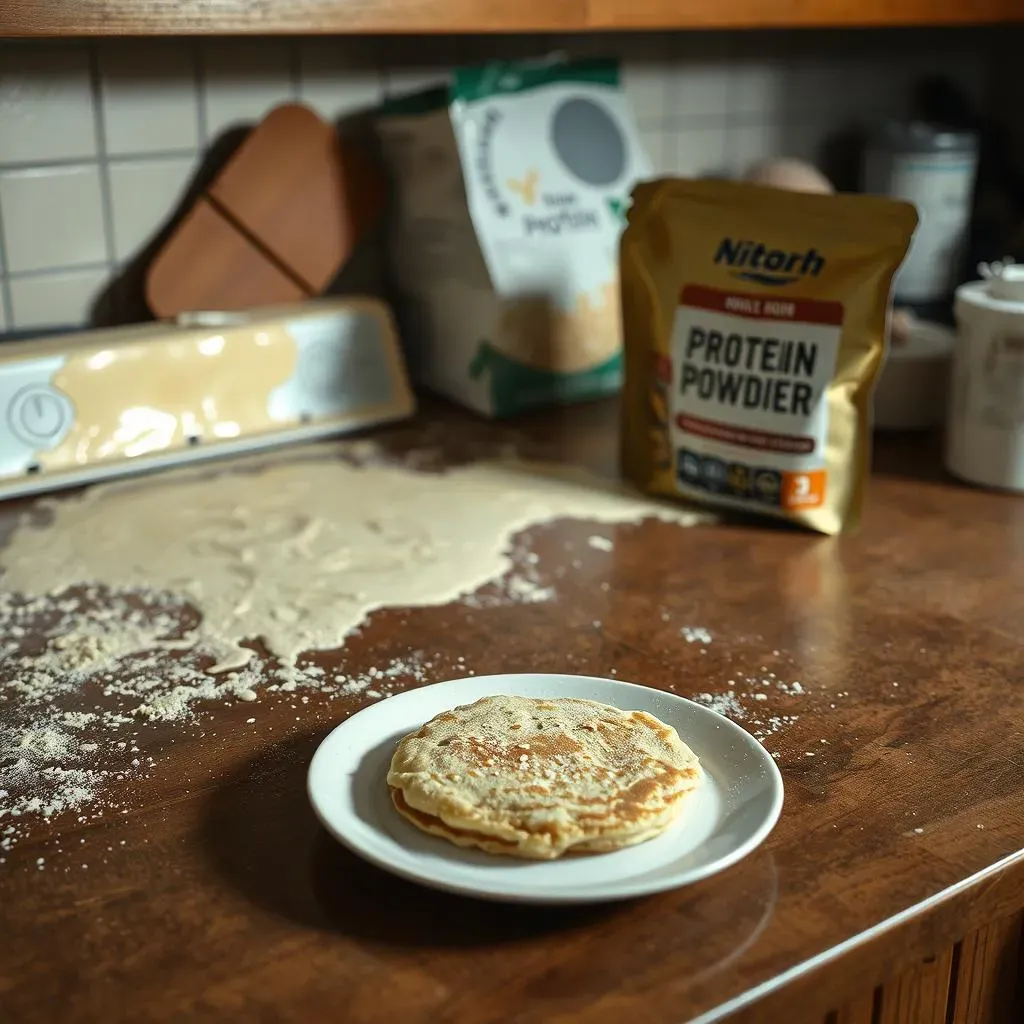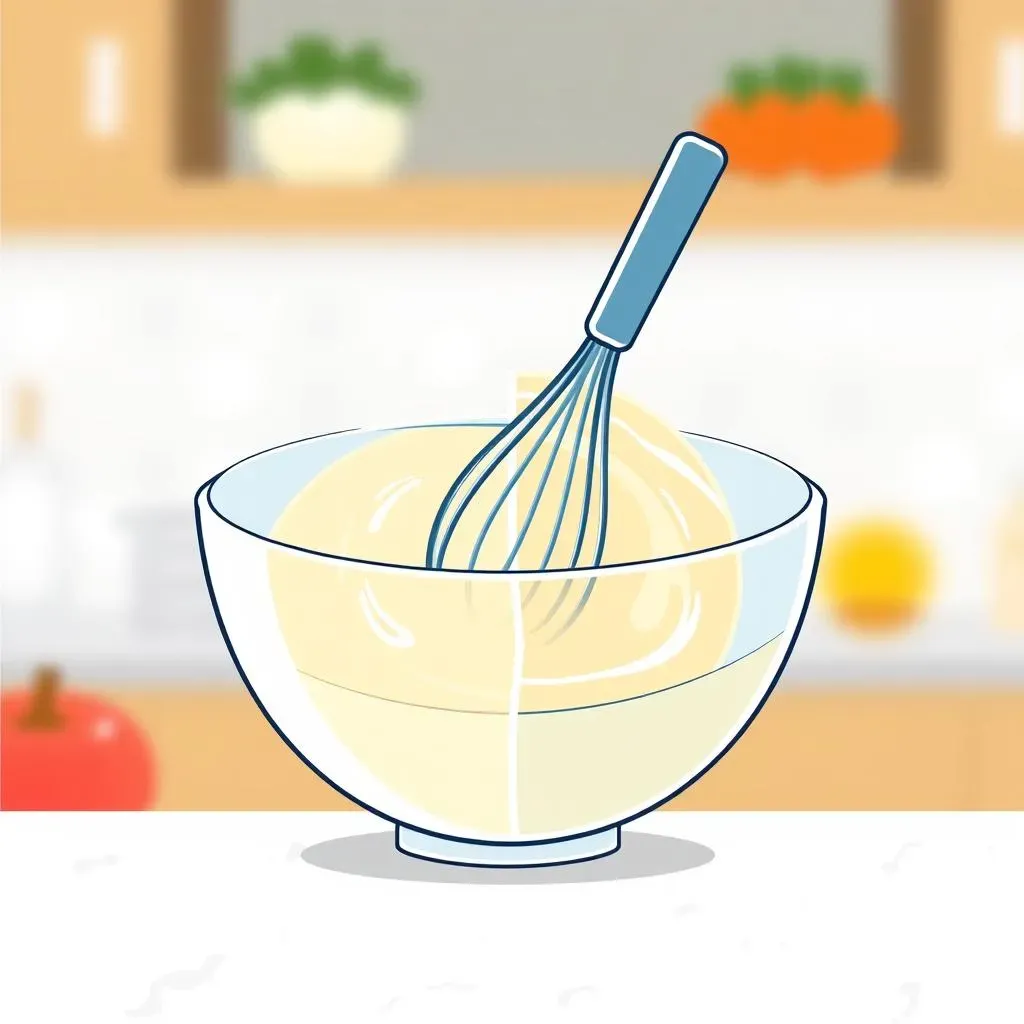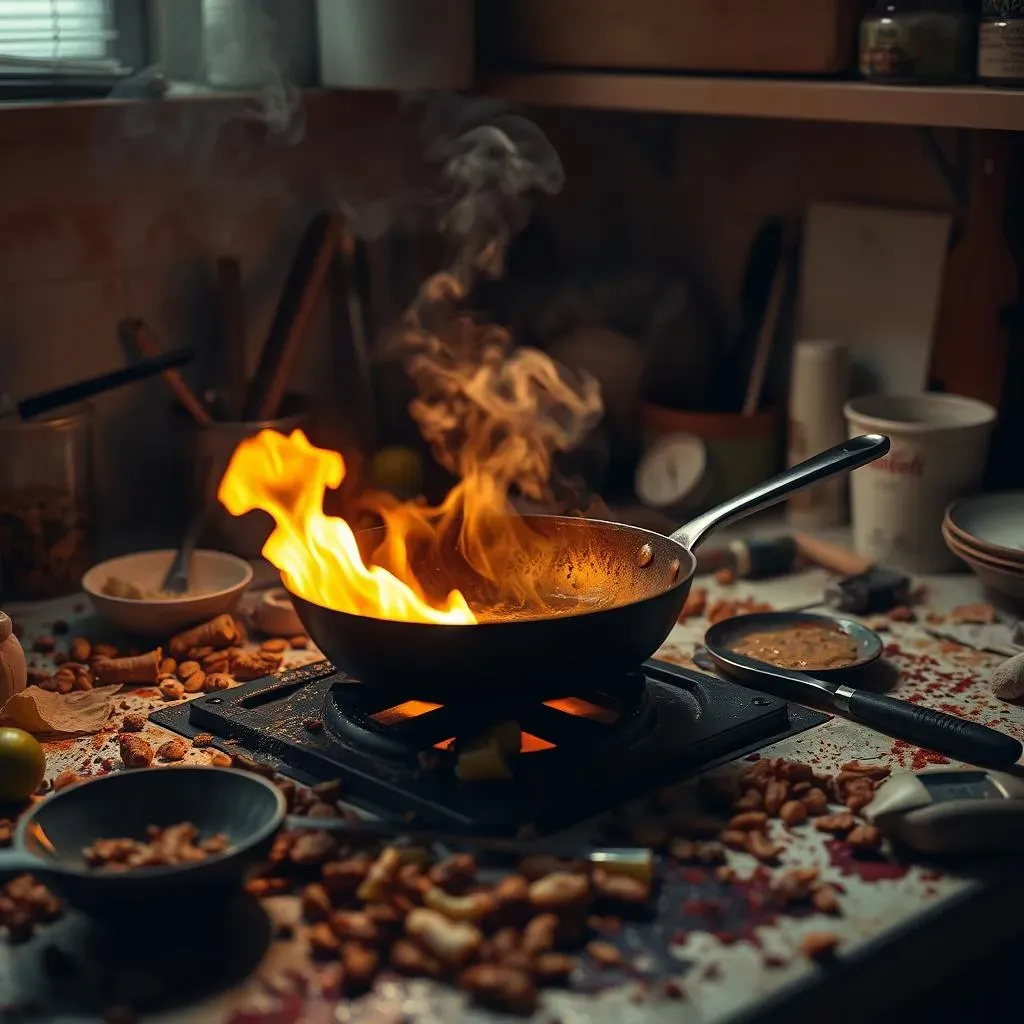Table of Contents
Let's face it: protein pancakes are amazing. They're a delicious and convenient way to pack a protein punch into your breakfast. But even the most dedicated pancake enthusiast can fall victim to a few common protein pancake mistakes. These seemingly small errors can lead to dry, rubbery, or just plain disappointing pancakes. This article is your guide to pancake perfection. We'll explore the most frequent pitfalls, from using too much protein powder (leading to that dreaded dry texture) to mastering the perfect liquid balance (no more soggy bottoms!). We'll also tackle mixing techniques – overmixing and undermixing are both recipe for disaster – and finally, we'll conquer the art of cooking your pancakes to golden perfection, avoiding burning or sticking. By the end, you'll be a protein pancake pro, armed with the knowledge to avoid common protein pancake mistakes and create fluffy, delicious pancakes every single time. Get ready to transform your breakfast game!
Too Much Protein Powder: The Dry Pancake Disaster

Too Much Protein Powder: The Dry Pancake Disaster
The Protein Powder Peril
Let's talk about the elephant in the pancake kitchen: protein powder. It's the star ingredient, right? The one that gives your pancakes that extra boost of muscle-building goodness. But too much of a good thing is, well, too much. Think of it like this: you wouldn't drown your waffles in syrup, would you? Too much protein powder does the same thing to your pancakes – it sucks out all the moisture, leaving you with a dry, crumbly mess. A great starting point is to follow a recipe closely, but if you're experimenting, start with a smaller amount of protein powder than you think you need. You can always add more, but you can't take it away!
For instance, if a recipe calls for 1/4 cup of protein powder, try using only 2 tablespoons initially. See how the batter looks and feels. Does it seem too thick? Add a tablespoon more. Is it still too dry? Then you might need to adjust the liquid content, which we'll cover later. Remember, it's better to start small and gradually add more until you achieve the perfect consistency. And hey, if you're still struggling, check out our guide to making perfect protein pancakes for even more tips and tricks!
Protein Powder Amount | Pancake Texture |
|---|---|
Too Little | Light, fluffy, but possibly lacking protein |
Just Right | Fluffy, moist, and packed with protein |
Too Much | Dry, crumbly, and dense |
Finding the Sweet Spot: Balancing Protein and Moisture
The key to fluffy protein pancakes isn't just about the amount of protein powder; it's about the balance between the dry and wet ingredients. Think of it like a seesaw: too much protein powder on one side and your pancakes will be dry and sad. To combat this, you need to add more liquid, such as milk, water, or even yogurt, to rehydrate the batter. This will make your pancakes lighter and fluffier. It's a delicate dance, really. Start by adding a little extra liquid at a time, mixing thoroughly, and checking the consistency. Is it still too thick? Add more! Aim for a batter that's slightly thicker than regular pancake batter.
Different protein powders absorb liquids differently. Whey protein tends to be less absorbent than casein, for example. If you're using whey, you might need to add slightly more liquid than a recipe suggests. If you're using casein, you may need less. Experiment! Once you get the hang of it, making delicious protein pancakes will be a breeze. For more ideas on protein types, take a look at this protein pancake mix comparison article.
- Start with less protein powder than the recipe suggests.
- Gradually add more protein powder, checking the consistency after each addition.
- Add extra liquid (milk, water, yogurt) to rehydrate a too-dry batter.
- Use a whisk to thoroughly combine all ingredients.
Liquid Levels: The Soggy Bottom Blues

Liquid Levels: The Soggy Bottom Blues
Too Much Liquid: A Soggy Situation
Ah, the soggy bottom – the bane of many a pancake maker's existence. Too much liquid in your protein pancake batter is a recipe for disaster. Instead of fluffy, golden delights, you'll end up with pancakes that are dense, gummy, and frankly, sad. The culprit? Adding too much milk, water, or other wet ingredients. It's a common mistake, especially if you're not paying close attention to the recipe. Remember, protein powder absorbs liquid differently than regular flour. You might need slightly less liquid than a standard recipe calls for, especially if you’re using a recipe that doesn't specifically mention protein powder. Always start with the lower end of the recommended liquid range, and add more only if absolutely necessary. A good rule of thumb is to aim for a batter that is slightly thicker than regular pancake batter, but still pourable.
Think of it like this: Imagine trying to build a sandcastle with too much water. The sand becomes soupy and impossible to shape. Your pancake batter is the same. Too much liquid makes it impossible to create those light, airy pockets of air that give your pancakes their fluffy texture. If your batter is too thin, you'll end up with flat, sad pancakes. If you're unsure, check out our recipe for easy protein pancakes – it's a great starting point for beginners.
- Always measure your liquids precisely.
- Start with less liquid than the recipe suggests.
- Add more liquid gradually, mixing well after each addition.
- The batter should be slightly thicker than regular pancake batter.
Finding the Perfect Balance: Liquid and Protein Harmony
The perfect protein pancake is a delicate balance of wet and dry ingredients. It's not just about the amount of liquid, but also how it interacts with your protein powder. Different protein powders have different absorption rates. Some protein powders absorb more liquid than others. Whey protein, for instance, tends to absorb less liquid than casein. This means that if you're using whey, you might need a little more liquid than you would with casein to achieve the same consistency. Always start with the lower end of the recommended liquid range, and add more only if the batter seems too thick. Remember, you can always add more liquid, but you can't take it away!
Experimentation is key! Don't be afraid to adjust the recipe based on your specific protein powder and your desired consistency. If you find your pancakes are consistently too wet or too dry, take notes on the type of protein powder you used, the amount of liquid, and the final result. Over time, you'll develop a feel for the perfect balance for your preferred recipe. For more detailed information on different protein types, check out our guide to using casein in your protein pancakes.
Liquid Amount | Pancake Texture |
|---|---|
Too Little | Dry and crumbly |
Just Right | Fluffy and moist |
Too Much | Dense and gummy |
Mixing Mayhem: Overmixing and Undermixing Woes

Mixing Mayhem: Overmixing and Undermixing Woes
Overmixing: The Gluten Glop
Overmixing your protein pancake batter is like kneading bread dough – you're developing gluten, and that's not what you want in your pancakes. Too much gluten leads to tough, chewy pancakes that lack that light and fluffy texture we all crave. Think dense, rubbery discs instead of airy, delightful stacks. The key is to gently mix the ingredients until they're just combined. A few lumps are okay! In fact, a slightly lumpy batter is often a sign that you haven't overmixed. Don't aim for a perfectly smooth batter; that's a surefire way to end up with tough pancakes. Instead, focus on gently folding the ingredients together until they're just incorporated. A whisk or a spatula works perfectly for this. For more tips on achieving that perfect texture, take a look at our article on perfect protein pancakes.
Imagine trying to make a soufflé by vigorously whipping the eggs. You'd end up with a flat, sad soufflé, right? The same principle applies to protein pancakes. Gentle mixing is crucial for maintaining the airiness of the batter. Overmixing introduces too much air, which creates gluten, resulting in tough pancakes. So, remember: gentle is key! Don't be afraid to leave a few lumps. A slightly lumpy batter is perfectly acceptable and often leads to fluffier pancakes. If you're still unsure, you could check out our easy protein pancake recipe for a visual guide.
- Mix gently until just combined; a few lumps are okay.
- Use a whisk or spatula to avoid overmixing.
- Don't aim for a perfectly smooth batter.
Undermixing: The Clumpy Catastrophe
On the flip side (pun intended!), undermixing your batter can lead to a completely different set of problems. Instead of tough pancakes, you'll end up with unevenly cooked pancakes, some parts potentially undercooked or raw, while others are burnt. This is because the ingredients haven't been properly distributed throughout the batter. You might also end up with pockets of dry protein powder, which won't mix into the batter properly and will create an unpleasant texture. To avoid this, make sure you mix until all the ingredients are fully combined, with no visible clumps of dry ingredients. Again, a few lumps are fine, but you should not have large, unmixed clumps of dry ingredients remaining in your batter. For more information on getting the right consistency, see our article on dry protein pancakes.
Think of it like making a cake – you wouldn't just throw all the ingredients in a bowl and hope for the best, would you? You need to properly combine them to ensure even baking and a consistent texture. The same principle applies to protein pancakes. Take your time, mix gently but thoroughly, and ensure all the ingredients are evenly distributed before cooking. If you're unsure whether you've mixed enough, take a spoonful of batter and check for any large, dry clumps. If you see any, keep mixing until the batter is smooth and evenly combined. Using a good protein pancake mix can also help!
Mixing Technique | Pancake Result |
|---|---|
Undermixed | Unevenly cooked, clumpy |
Perfectly Mixed | Evenly cooked, smooth |
Overmixed | Tough, chewy |
Cooking Catastrophes: Burning, Sticking, and Other Cooking Fails

Cooking Catastrophes: Burning, Sticking, and Other Cooking Fails
Heat and Pan Power: The Burning Question
Let's talk about those dreaded burnt protein pancakes. Nobody wants a crispy, blackened disc instead of a fluffy, golden pancake. The culprit is often too high heat. Protein pancake batter cooks a little differently than regular batter; it can burn easily if you're not careful. Start with medium-low heat. This gives the pancakes time to cook through evenly without burning on the outside before the inside is done. You want the pan hot enough to cook the pancakes, but not so hot that they burn before they have a chance to set. A good way to test if your pan is at the right temperature is to sprinkle a few drops of water onto the surface. If the water sizzles gently and evaporates quickly, your pan is ready. If the water beads up or evaporates too slowly, your pan isn't hot enough. If it evaporates too quickly, reduce the heat.
Think of it like this: you wouldn't cook a steak on high heat the entire time, right? You'd sear it initially, then lower the heat to cook it through evenly. The same principle applies to protein pancakes. A lower heat ensures even cooking and prevents burning. And if you're still unsure, check out our comprehensive guide on making perfect protein pancakes for more tips and tricks!
- Start with medium-low heat.
- Adjust heat as needed to prevent burning.
- Test the pan temperature with a few drops of water.
The Sticky Situation: Preventing Pancakes from Sticking
Nobody likes pancakes that stick to the pan like glue. It's frustrating, messy, and often results in broken, unevenly cooked pancakes. The key to preventing sticking is to use a lightly oiled, non-stick pan. Before you start cooking, lightly grease your pan with cooking spray, butter, or oil. This creates a barrier between the batter and the pan, preventing sticking. Make sure you don't use too much oil, though – excess oil can make your pancakes greasy. A light coating is all you need. Also, ensure your pan is properly heated before adding the batter. A cold pan will cause the pancakes to stick more easily. If you're still struggling with sticking, you might want to consider using a non-stick pan specifically designed for pancakes.
Another tip is to let the pancakes cook undisturbed for a couple of minutes before flipping. This allows the bottom to set properly, reducing the chances of sticking. Once the edges start to look set and bubbles start forming on the surface, it's time to flip. If you're still having trouble, you might want to consider using a different type of pan, or adjusting your cooking technique. For example, if you're using a cast-iron pan, make sure it's properly seasoned. If you're using a non-stick pan, make sure it's clean and in good condition. For more detailed recipe ideas, you can check out our whey protein pancake recipe.
Pan Type | Sticking Potential |
|---|---|
Non-stick | Low |
Cast iron (well-seasoned) | Medium |
Regular | High |